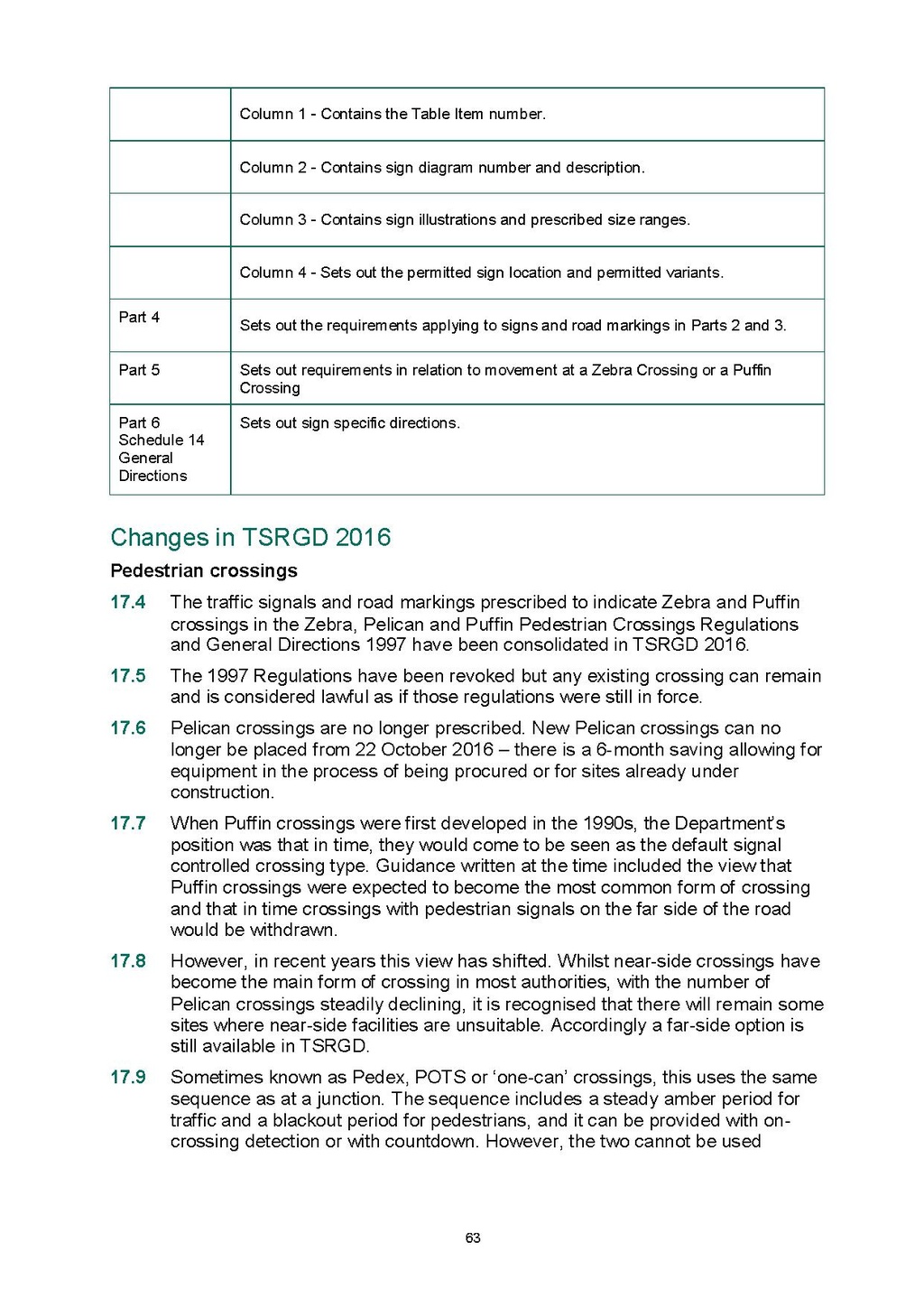| Column 1 - Contains the Table Item number. | |
| Column 2 - Contains sign diagram number and description. | |
| Column 3 - Contains sign illustrations and prescribed size ranges. | |
| Column 4 - Sets out the permitted sign location and permitted variants. | |
| Part 4 | Sets out the requirements applying to signs and road markings in Parts 2 and 3. |
| Part 5 | Sets out requirements in relation to movement at a Zebra Crossing or a Puffin Crossing |
| Part 6 Schedule 14 General Directions |
Sets out sign specific directions. |
Changes in TSRGD 2016
Pedestrian crossings
17.4
The traffic signals and road markings prescribed to indicate Zebra and Puffin crossings in the Zebra, Pelican and Puffin Pedestrian Crossings Regulations and General Directions 1997 have been consolidated in TSRGD 2016.
17.5
The 1997 Regulations have been revoked but any existing crossing can remain and is considered lawful as if those regulations were still in force.
17.6
Pelican crossings are no longer prescribed. New Pelican crossings can no longer be placed from 22 October 2016–there is a 6-month saving allowing for equipment in the process of being procured or for sites already under construction.
17.7
When Puffin crossings were first developed in the 1990s, the Department's position was that in time, they would come to be seen as the default signal controlled crossing type. Guidance written at the time included the view that Puffin crossings were expected to become the most common form of crossing and that in time crossings with pedestrian signals on the far side of the road would be withdrawn.
17.8
However, in recent years this view has shifted. Whilst near-side crossings have become the main form of crossing in most authorities, with the number of Pelican crossings steadily declining, it is recognised that there will remain some sites where near-side facilities are unsuitable. Accordingly a far-side option is still available in TSRGD.
17.9
Sometimes known as Pedex, POTS or 'one-can' crossings, this uses the same sequence as at a junction. The sequence includes a steady amber period for traffic and a blackout period for pedestrians, and it can be provided with on crossing detection or with countdown. However, the two cannot be used
63
